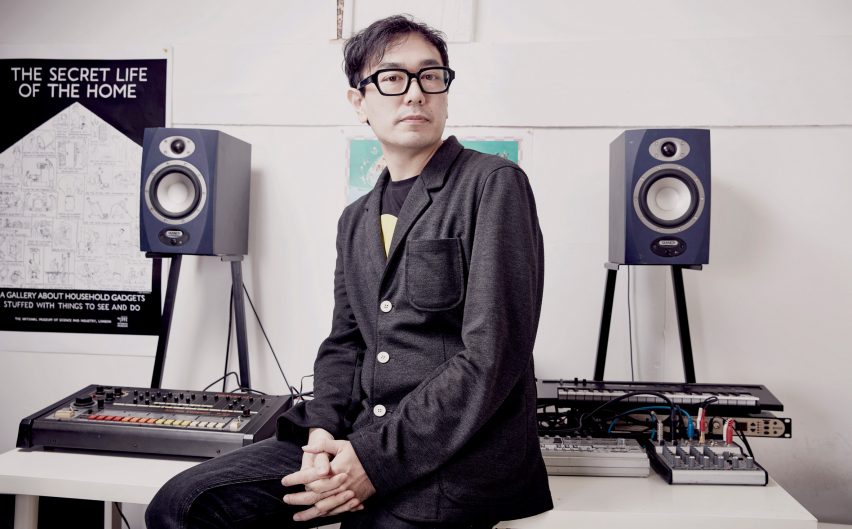
Yuri Suzuki shows the fun side of sound design in seven offbeat projects
There's a lot more to sound design than special effects, says Yuri Suzuki. The London-based designer talks Dezeen through seven projects that show how he is using design to improve our relationship with noise.
Born in Japan, Suzuki trained as a designer rather than as a musician. He is now a partner at major design agency Pentagram, working on installation, interaction and product design, and also sidelines as a DJ.
Suzuki's work explores how the world of sound can be made more tangible, through its relationship with objects and technology.
"So much sound is not well designed"
"My definition of sound design really comes from the perspective of a designer, thinking about how we can design the sound of our environment," he told Dezeen.
"So much sound in our surroundings is not well designed, like in public transport for instance," he explained. "I want people to know that product design can offer an answer."
First sound designer at Design Museum
From now until January 2020, Suzuki is presenting some of his "strange and fun" projects at the Design Museum in London, alongside the installation Sound in Mind, for which he has installed a network of listening tubes in the building's main atrium.
He is the first sound designer ever to exhibit at the museum. But he hopes to inspire more people to work in the field.
"Music and sound can really help in communication," said the designer, "and physicality can really emphasise the presence of the sound."
Here are seven projects that Suzuki is particularly proud of:
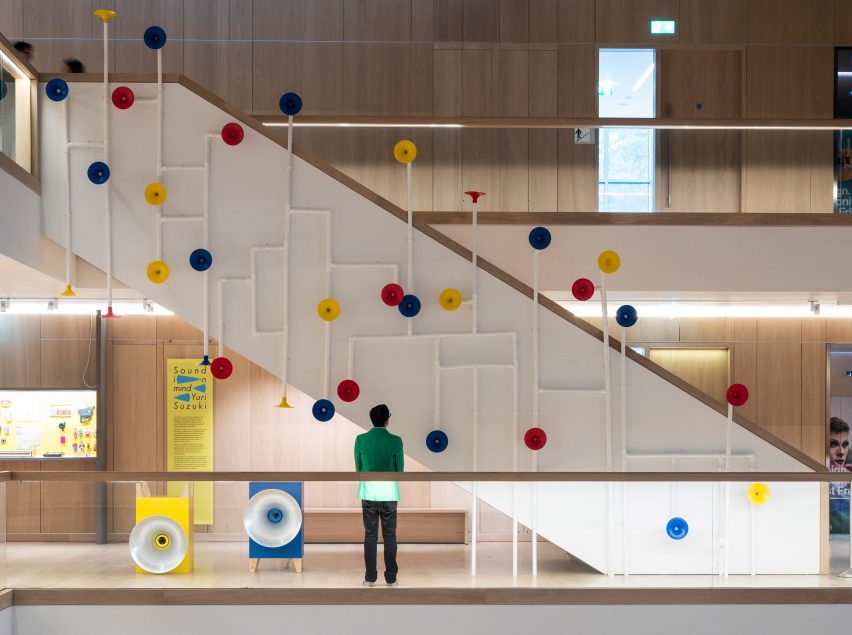
Acoustic Pavilion/Sound in Mind
The first iteration of Sound in Mind was created inside the Le Corbusier-designed Saint-Pierre church in Firminy, France in 2015. Visitors were invited to piece together tubes, to make listening devices in varying shapes and sizes.
Different shapes created different sound effects. "This project was about the participation of people, building their own sculptures" said Suzuki.
At the Design Museum, the structure has been designed to climb up a staircase in the atrium.
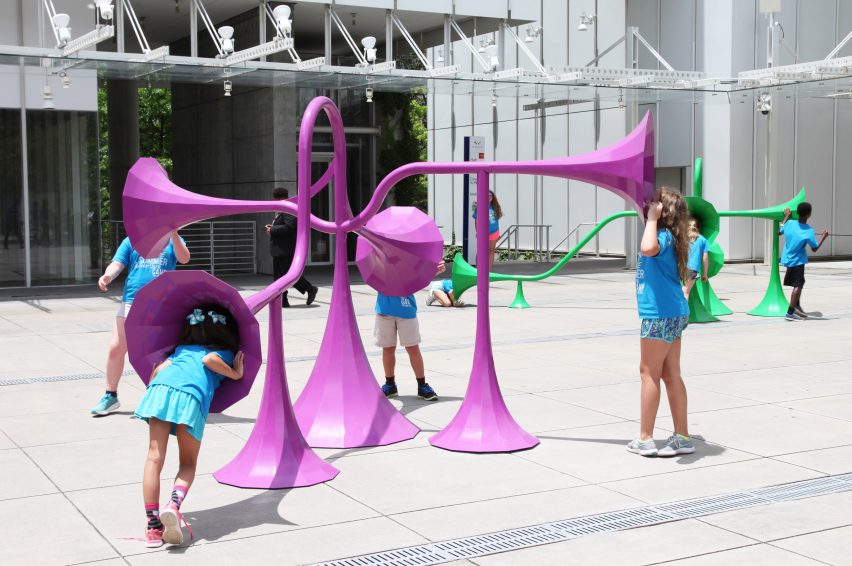
Following on from the Acoustic Pavilion, the Sonic Playground was a series of sculptural horns installed outside the High Museum of Art in Atlanta, Georgia, in 2018. They were designed to encourage interaction between strangers.
A person might scream or shout at one end, while another person might stick their head inside the tube at the other end to hear the result. Different distortion effects were applied, and the sounds came out of different places, so the result was often surprising.
"I wanted to make a moment for communication with somebody else," said Suzuki.
OTOTO
OTOTO is an electronic device that allows you to turn any object into a musical instrument. Colourful crocodile clips connect anything – from a solid object to a liquid – to a synthesiser, then any touch will cause the device to make a sound.
It is also possible to change the type of sound each object makes.
The project stemmed from Suzuki's own frustrations trying to understand computer programming. He wanted to make it easy for everyone, regardless of their experience, to make electronic music.
"When I was child, I was always making my own electronic musical instruments, but you need to have programming and physical computing knowledge, so it was really hard for me to build anything," said the designer.
"There are plenty of people who have no idea how to make an electronic project, but those kind of people could still have really amazing ideas for how a music interface should be."
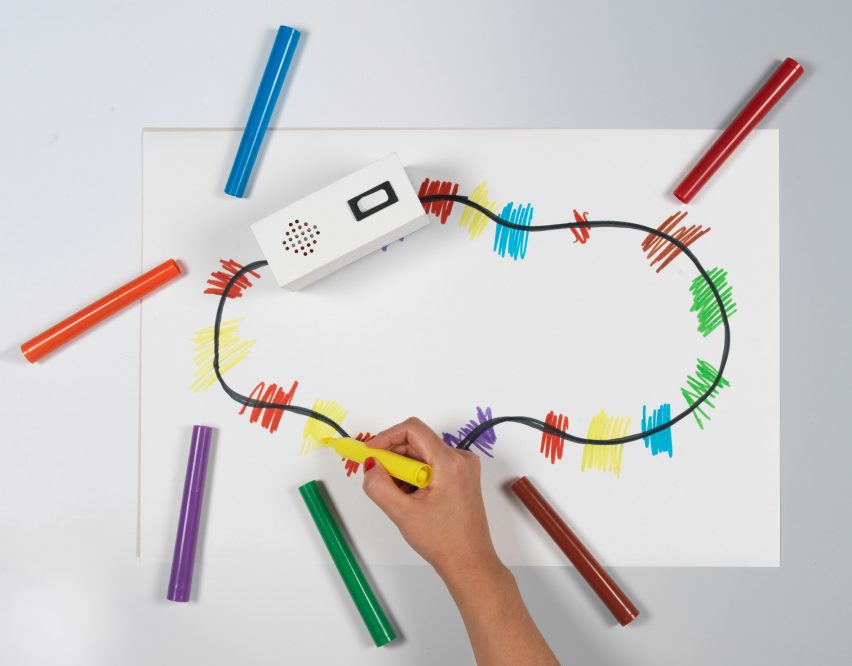
Colour Chaser
This is another toy-like project that Suzuki developed in response to his own struggles making music. Being dyslexic, one of the biggest obstacles for him was being unable to read musical scores.
The Colour Chaser was born out of the desire to create a type of musical notation that could be drawn by anyone. A robot follows lines drawn in felt-tip pen, and when it passes over a colour, it plays a corresponding sound.
"I wanted to create a new kind of musical notation that would allow more visual people to understand how sound works," said Suzuki.
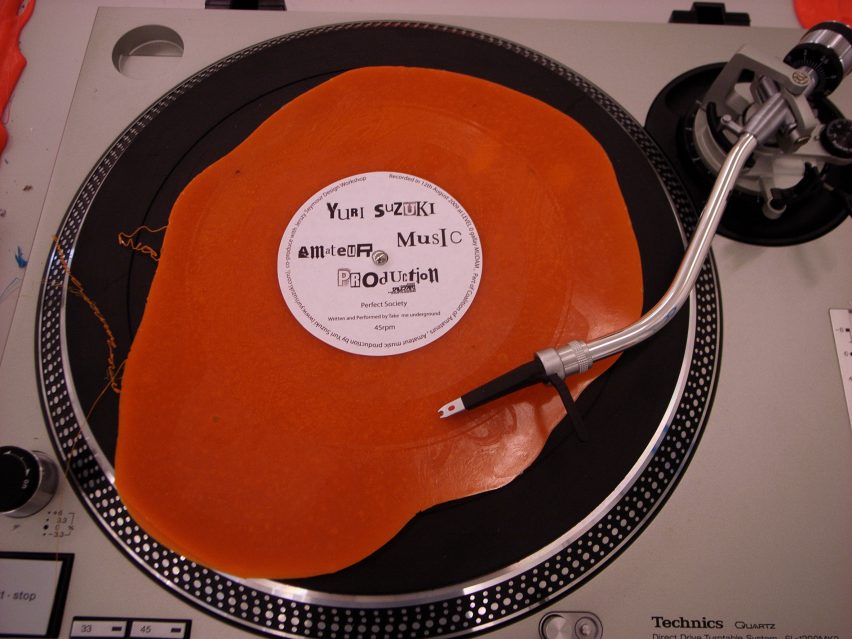
Amateur Music Production
This project, which Suzuki created in collaboration with Jerszy Seymour, considers how the rise of digital music means that analogue mediums, like the CD or cassette tape, will soon be little more than a memory.
The pair developed a primitive stamping device to allow people to make their own vinyl records, as records of their digital purchases.
"Records are really difficult to copy, so records keep their value in their physicality," said Suzuki. "It made me think about how we could create records in a craft way."
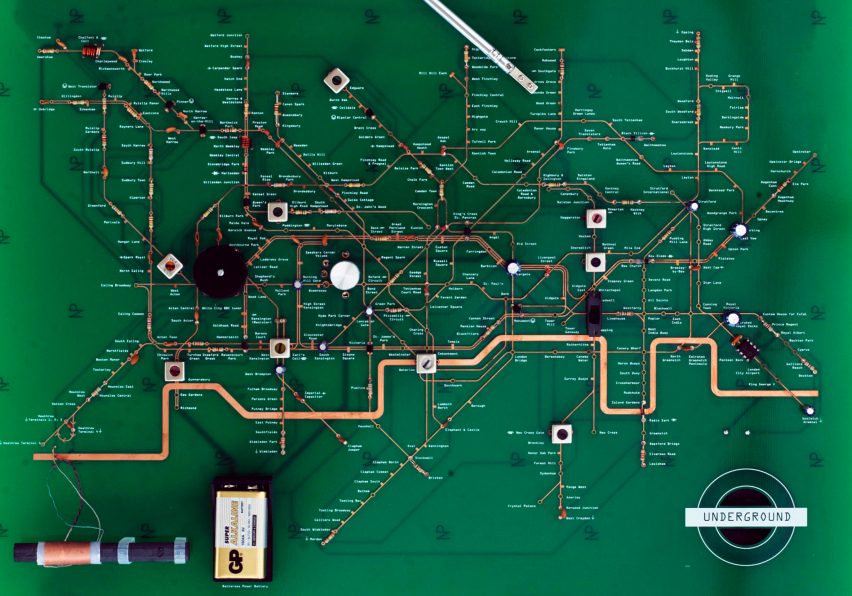
Suzuki created this radio, which takes the form of the London Underground map, for the Design Museum's Designers in Residence programme back in 2012. Every component has a reference, for instance the battery sits in the location of Battersea Power Station and a speaker can be found on Speaker's Corner.
The idea was to make it easy for people to understand how the circuit works and how to fix it if necessary. It was a reaction against today's consumer culture, where it is often easy to replace rather than repair.
"I created this circuit board design to help people visually understand what's happening with the electronics," said Suzuki.
"From commuting, you know each Tube line really well already. So we actually linked the component functions to stations."
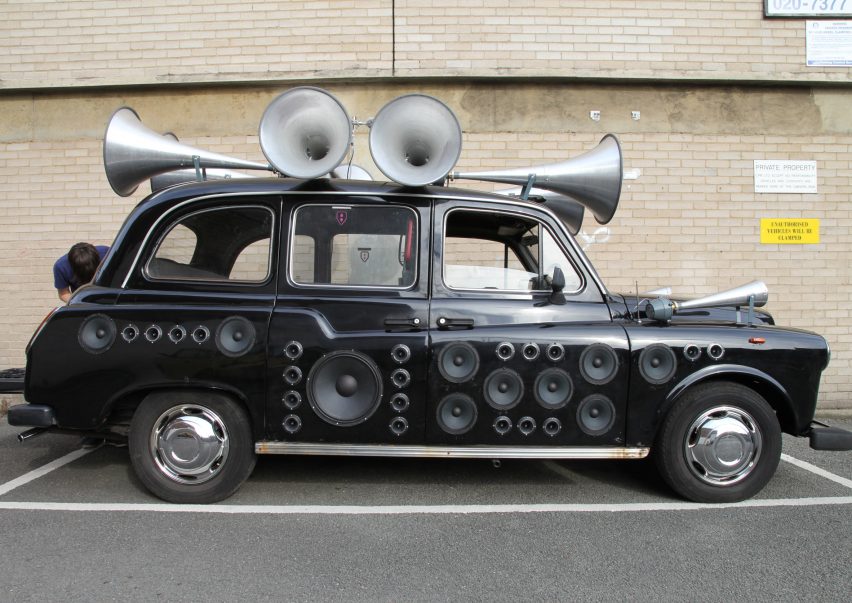
Sound Taxi
This installation from 2012 saw Suzuki transform a typical London taxi into a sound machine. Covered in speakers and microphones, the car recorded the sounds of the city and transformed them into music.
"As we walk down the street, it is really provocative in way, because people treat us with noise that is not music at all," said Suzuki.
"By driving this car, the street can have a totally different music composition. We translate the street noise into something else."